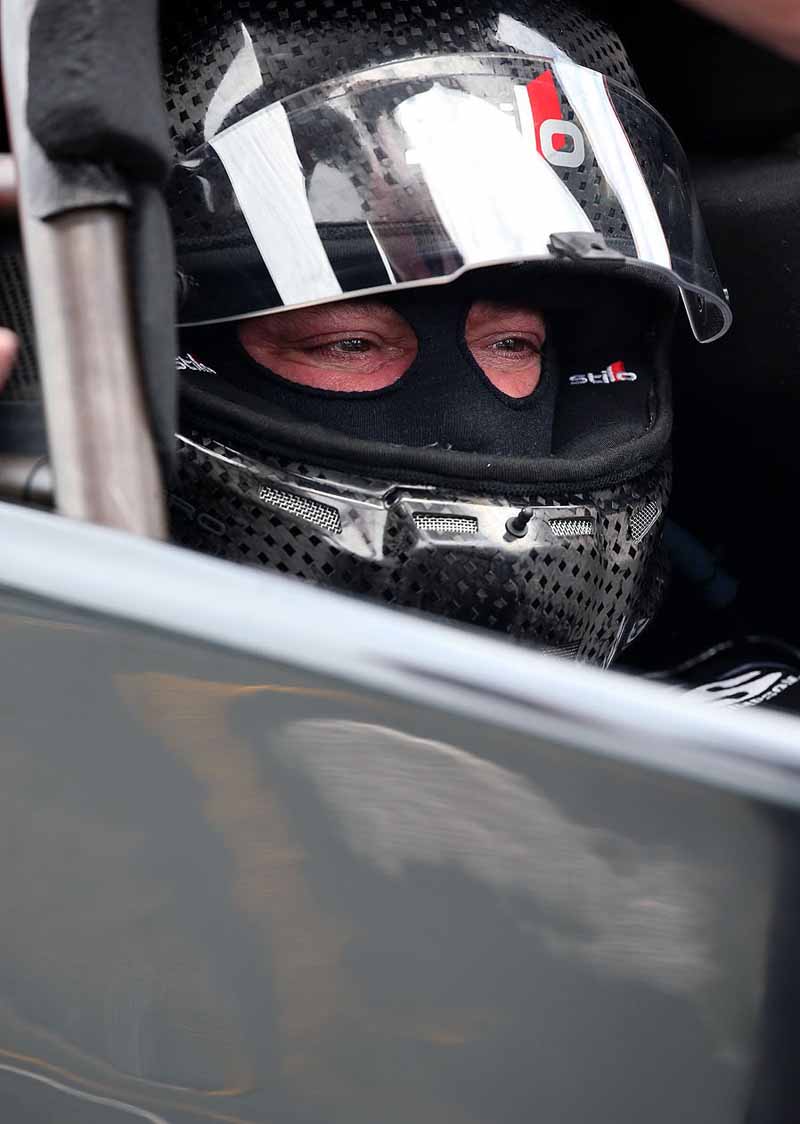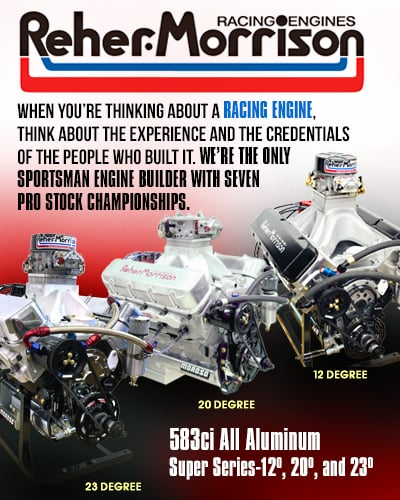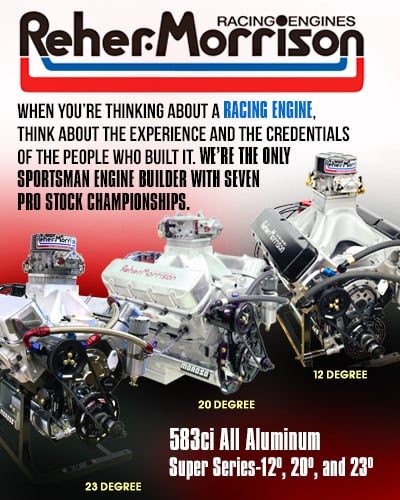STEWART CAN EXPLAIN SENSATION OF DRAG RACING TO ASSOCIATES IN OTHER MOTORSPORT FORMS

Inquiring NASCAR minds want to know. Stewart’s associates in circle-track / stock-car racing have been curious about his drag-racing experience.
“They've asked questions about it. Obviously, when I ran the Top Fuel car, they had a lot of questions,” he said. “Kyle Larson was there when I ran my last run, in Charlotte last year. So it was fun for those guys and fun to show them around and show them something different, because I know how cool it was for me. It was cool to just see it.
“But then when you get a chance to really get integrated into somebody's program and you really start having the ability to ask questions from what you see, then it's like a multiplier of how much you really enjoy the experience. So they've asked questions,” Stewart said.
“The funny thing” he said, “is they all hear about how many Gs it is when the ’chutes come out, and I don't even think about it. I've laughed about it, because it's come up so many times now that it's kind of a joke. But they talk about ‘What's the acceleration feel like?’ and then they're like, ‘What's it feel like when the chutes come out?’
“And without any hesitation I go, ‘Relief.’ And they're talking about wanting to know what it physically feels like. I'm like, ‘No, mentally, it feels great, because I know I'm going to stop. Running 300-some-odd mile an hour, at some point, I'm going to stop and not end up on I-15,” Stewart said in a conversation last weekend at Las Vegas, when he was Nevada Nationals Top Alcohol Dragster runner-up in his first drag race.
 “But it's questions like that that those guys – they don't have any more knowledge than an average fan watching on TV. So to hear the questions that they've had are the same ones that I had when I first started coming around,” he said.
“But it's questions like that that those guys – they don't have any more knowledge than an average fan watching on TV. So to hear the questions that they've had are the same ones that I had when I first started coming around,” he said.
Townsend Bell, IMSA WeatherTech SportsCar Championship racer and former IndyCar driver turned NBC commentator, has been a good friend with drag racers Jon and Ron Capps, since they all were growing up in San Luis Obispo, Calif. Jon Capps was Bell’s go-kart coach when they hung out at the track at Santa Maria. He later became better acquainted with Ron Capps, and one day at Auto Club Raceway at Pomona found himself a guest in the two-time Funny Car champion’s pit. Just watching Ron Capps warm up his 11,000-horsepower, nitro-gulping race car, Bell said, “My eyes were watering and I couldn’t breathe. I’m already intimidated, if not concerned.” After such a disturbing introduction, he still is wondering how he let Capps talk him into standing by the Christmas Tree during fuel-car qualifying. But there he was, and he never will forget it.
Bell said, “I have never felt more violated than standing next to a Top Fuel car as it launched. It’s utterly terrifying, and I have no desire to do it again. I can’t imagine what it’s like sitting inside. The only way I can describe it was I just felt totally violated.” And this is from a fellow who has had no qualms about driving a race car 224 miles an hour and dicing in and out of traffic with 32 others trying to win the Indianapolis 500-Mile Race.
Marco Andretti said he absolutely wasn’t interested in a Top Fuel dragster, and John Force son-in-law Graham Rahal (whose wife, Courtney, is a 12-time Funny Car winner) he “never” will drop open-wheel racing and defect to drag racing. “Typically, I like to control when things blow up in my face. You know, it’s just not me. It’s just not my thing,” Rahal said. “She probably couldn’t even get out of the pits in an IndyCar, because it’s so much different, with the pedals and all that stuff. It’s a very weird thing to drive, typically, for a lot of people.” He did relent and say, “I might drive a dragster, because at least the engine’s behind me.”
Ryan Briscoe, who left the IndyCar Series and competes in endurance races, said, “To me. it looks like they're just wrapping their legs around a bomb, basically” but said, “It would be amazing to try one. The G-forces they pull are just incredible.”
Two-time IndyCar Series champion Josef Newgarden said, “I’d like to try drag racing. That’d be fun. Any racing sounds like fun racing to me. I’ve got huge respect for those guys. It’s a different art. Every racing [form] is a different art. I don’t know anything about that world, but it’d be fun to learn about it, what those guys have to do, and what the process is for them with their series.” As for speeding downtrack at 330-plus mph, Newgarden said, “C’mon, it’s only what? Four seconds? You can get over it.”
After a whirl at Nelson Hoyos’ Driven2Win Drag Racing School, IndyCar’s Charlie Kimball said, “I’ve never felt anything kick, accelerate, that hard for that long. It was incredible, pretty special. I have a lot left to accomplish here in IndyCar and open-wheel racing, and I’m not sure if I get the opportunity to retire that I’d have the energy to fully commit to what it would take to do drag racing right.”
Sebastian Saavedra became acquainted with three-time Top Fuel champion Antron Brown in 2009, at his first drag race. “I got to jump in his car and turn it on and feel it on the warm-up. It was intense,” the 32-year-old Colombian racer said, “and I wouldn’t say no to a 10,000-horsepower beast, right? I’ll do it in my younger years [rather than] in the older, for sure.” Back in 2014, when he was driving for team owner Jimmy Vasser, who has a drag-racing interest, Saavedra admired the boss’ trick Camaro, which sported about 4,000 horsepower. Saavedra said, “Maybe I like to try that. Don’t jump straight into the big boys. I have a lot of respect for that. They have the same level of commitment as any other driver: a lot of preparation, a lot of training. I know many good mechanics that have gone from IndyCar to the NHRA. A lot can happen in a few milliseconds.”
Sage Karam, who’s from Nazareth, Pa., said he attended the Summernationals at Englishtown, N.J., and “loved it. It’s really, really cool to watch.”
 So some racers in other forms of motorsports don’t see themselves at all doing what Stewart is doing in the NHRA, while others might give it a try and yet some are content just to enjoy the spectacle of it.
So some racers in other forms of motorsports don’t see themselves at all doing what Stewart is doing in the NHRA, while others might give it a try and yet some are content just to enjoy the spectacle of it.
Stewart said, “You ask these [drag-racing] guys if they’d ever get in an Indy Car or a Cup car or sprint car, and they're like, ‘Hell, no. You guys are crazy.’ And like, everybody thinks everybody's crazy. I guess the moral of story is everybody that drives a race car in any division is crazy.
“It’s just something so different than everything that I've done,” Stewart said. “I mean, I was talking [last Saturday] to Sam Schmidt [former IndyCar driver and longtime team owner], and I told him, ‘Everything that we've done in our careers is somewhat under the same bubble and umbrella. I mean, every car has its nuance and something different that you have to learn about it, but you come over here and it's like Fantasy Island. It's way off on its own deal. It's totally different than anything we've ever been a part of.”
But he said he didn’t find it hard to fit in and learn the complexities of drag racing when he first met wife Leah Pruett and started observing her crew and recognized that he was welcome to ask questions of all kinds about the car and drag-racing culture.
“I think the thing that I liked early on [was] when I got integrated into the team and got to know her guys and felt comfortable asking questions,” Stewart said. “The more that I learned, the further I felt like I was away from knowing everything I need to know. It's like you think, ‘All right, this is the end of what you learn, and this is where I'm at. I've got to get to here.’ And then as you start learning more and more, you realize that the bar is not going to stop here. I'm way further away from that goal and that end spot than I thought I was.
“And for me, it's just nice to have something new that's stimulating when you're doing the same stuff. I make it sound like it's super boring. It's not,” he said. “And especially after all the kinds of different types of cars that I'm a part of, it's still just kind of after 40 years of racing and everything, it's the same, but there's little variations. You come over here and it's drastically different. And it really stimulated my mind into thinking differently about a lot of different things.
“And even when I go back to the Cup shop or the sprint car shop,” Stewart said, he’s looking at “things that I see or learn here” and trying to determine whether “things you learn here can apply over there – and vice versa. “You think of things that we do in the NASCAR, IndyCar, and sprint car side. Some of those things we've been able to bring over here, as well. So the cross-pollination of ideas and mind sets, even though they don't 100-percent apply and cross over, there are some things that have stimulated these guys with what they've seen with the sprint car team and the NASCAR programs and vice versa.”








































